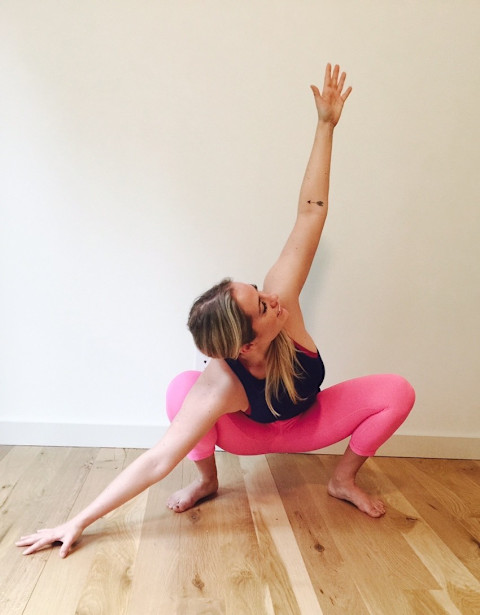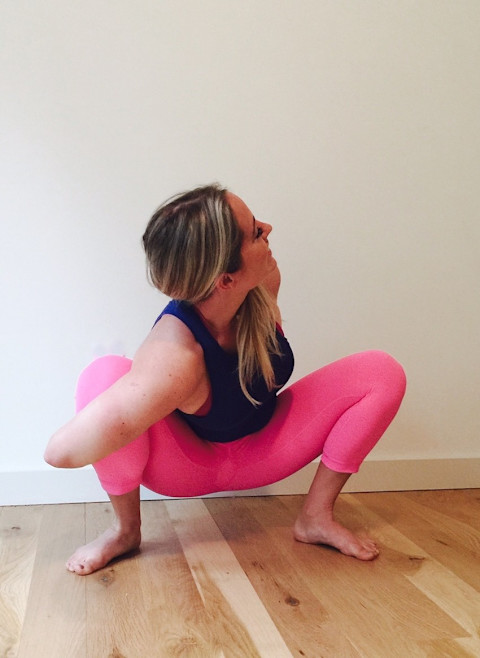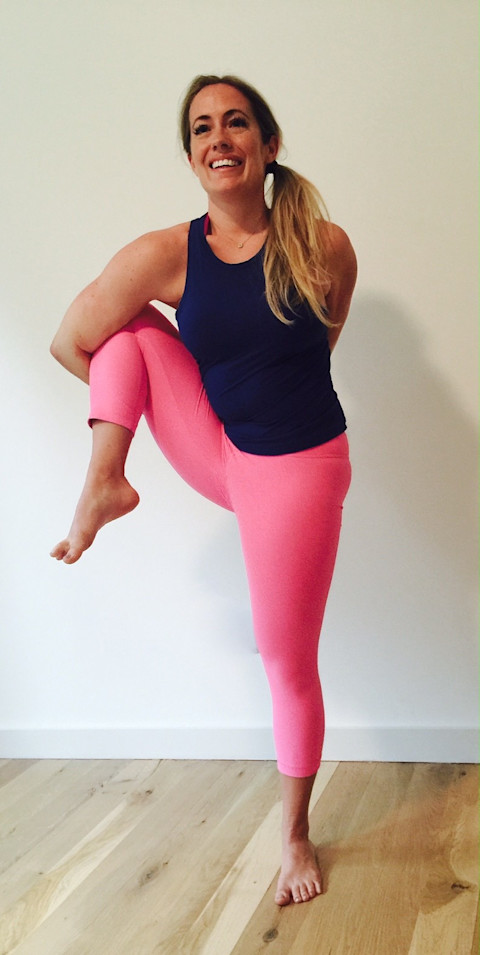For many of us around the world, it is awfully cold right now. Yoga pants and sports bras are covered by multiple layers of fleece and chunky sweaters. We can either refrain from our practice and hibernate like a yogi bear, or choose to embody the essence of impending spring time.
I chose the classic posture Malasana (Garland Pose) and gave it a springtime makeover — it is now a tulip bulb! This sequence of Malasana variations recreates the blooming process of a tulip, so that we can see the light at the end of the long winter tunnel and remember that when we water ourselves with yoga, nutrition and optimism — we bloom!
Warm up your body with a few rounds Cat/Cow and/or Sun Salutations and away you go.
Tulip Bulb (Malasana)

Start standing with your feet slightly wider than hips-width apart. Turn your heels in and toes out, and then drop down into a full squat. If your heels don't touch the ground, try taking a wider stance or placing a block or two under your seat for support.
Dip your chest down as you snuggle your shoulders into the inside of your thighs. Bring your palms together in front of your heart and press firmly as you broaden your upper chest. This action will open your hips and chest.
Think of lifting your heart up like a little tulip sprout getting ready to bust out of it's bulb!
Tulip Sprouts (Sumo-Malasana)

Maintain the stance of your legs from the first pose. Tuck your thumbs into the center of your palms and wrap your remaining fingers around your thumbs. Pump your fists up into the air, extending your arms straight and shoulder-width apart.
Engage your core to draw your torso as long and straight as possible. Don't forget to laugh at yourself here. There's a sense of victory and playfulness as your tulip sprouts pop out.
Tulip Bud (Revolved Malasana)

Drop your hands back to the ground and extend your right arm straight out in front of your right shin. Extend your left arm straight above you, following the same plane of alignment as your right arm, up and away from your base hand on the diagonal.
Revolve your chest open by pressing your right arm into your thigh, and continue extending the left arm actively. Gaze toward your top hand, or down at the ground if there's strain in your neck.
Imagine your arms as solid stalks as leaves begin to form! Stay here or if you'd like a deeper variation, proceed to the next pose.
Tulip Bud Variation (Wrapped Malasana)

Internally rotate both of your arms and bend at your elbows. Try to clasp your fingers or hands behind your back, or even grab hold of your right wrist with your left hand behind your right hip.
Spin your chest open, draw the base of the neck down and lift your heart space up.
Tulip Pose (Standing Wrapped Malasana)

Keep the wrap from the previous pose and look down at the floor. Wiggle your feet closer together and then lean into your left foot. Press up onto the ball of your right foot and hold your wrap even tighter.
Continue to relax your shoulders as you press into your left foot to start to stand up. Keep the bound leg tight to your torso and gaze down as you draw your standing leg to straight.
Lift up through your lower belly, elevate the heart and melt through the upper back.
Find a soft gazing point and smile — spring is on the way! Keep using your body as a way to manifest the warmth and beauty of the coming season.
Cover photo by Under Armour Women
Gallery courtesy of the author
